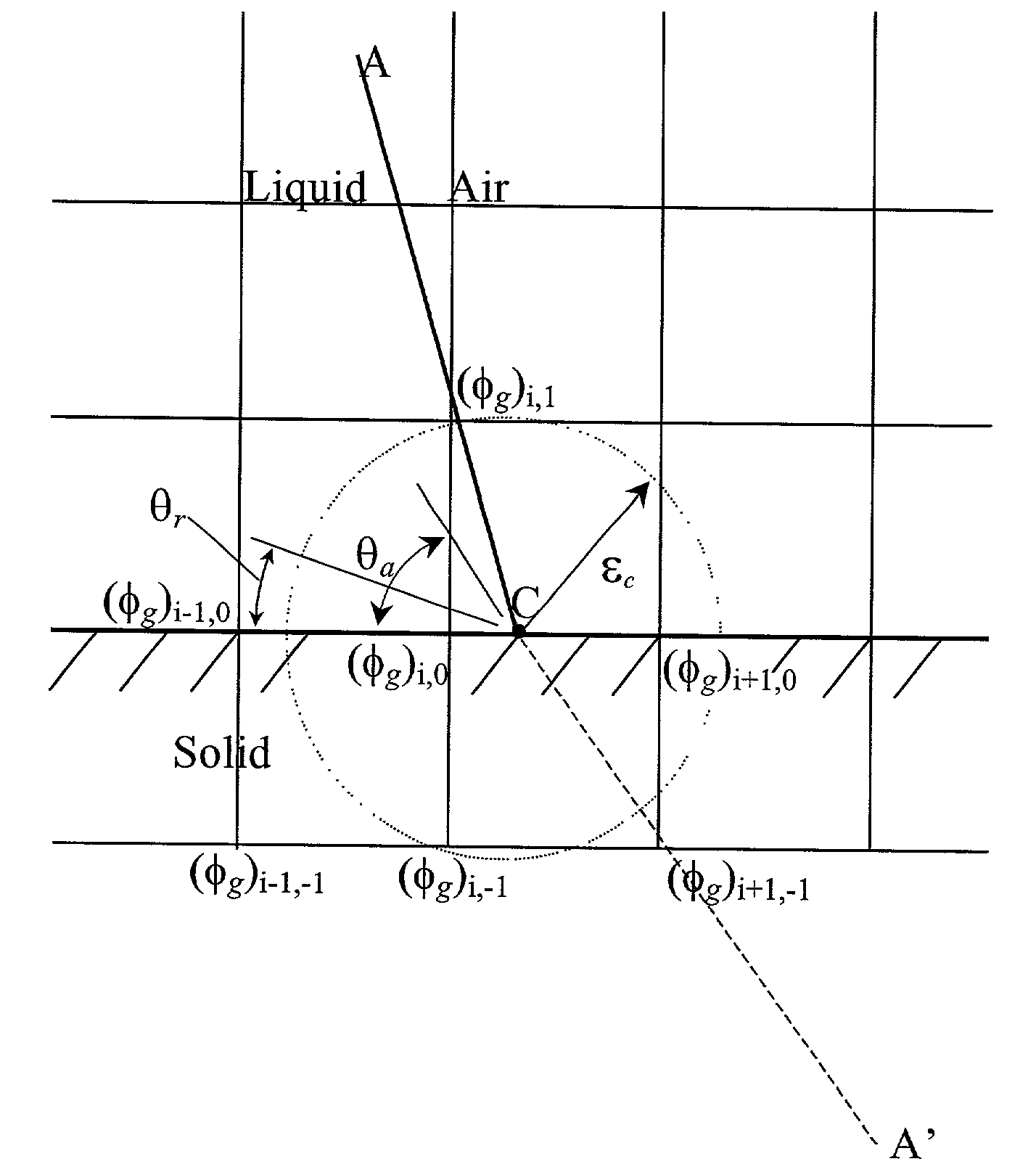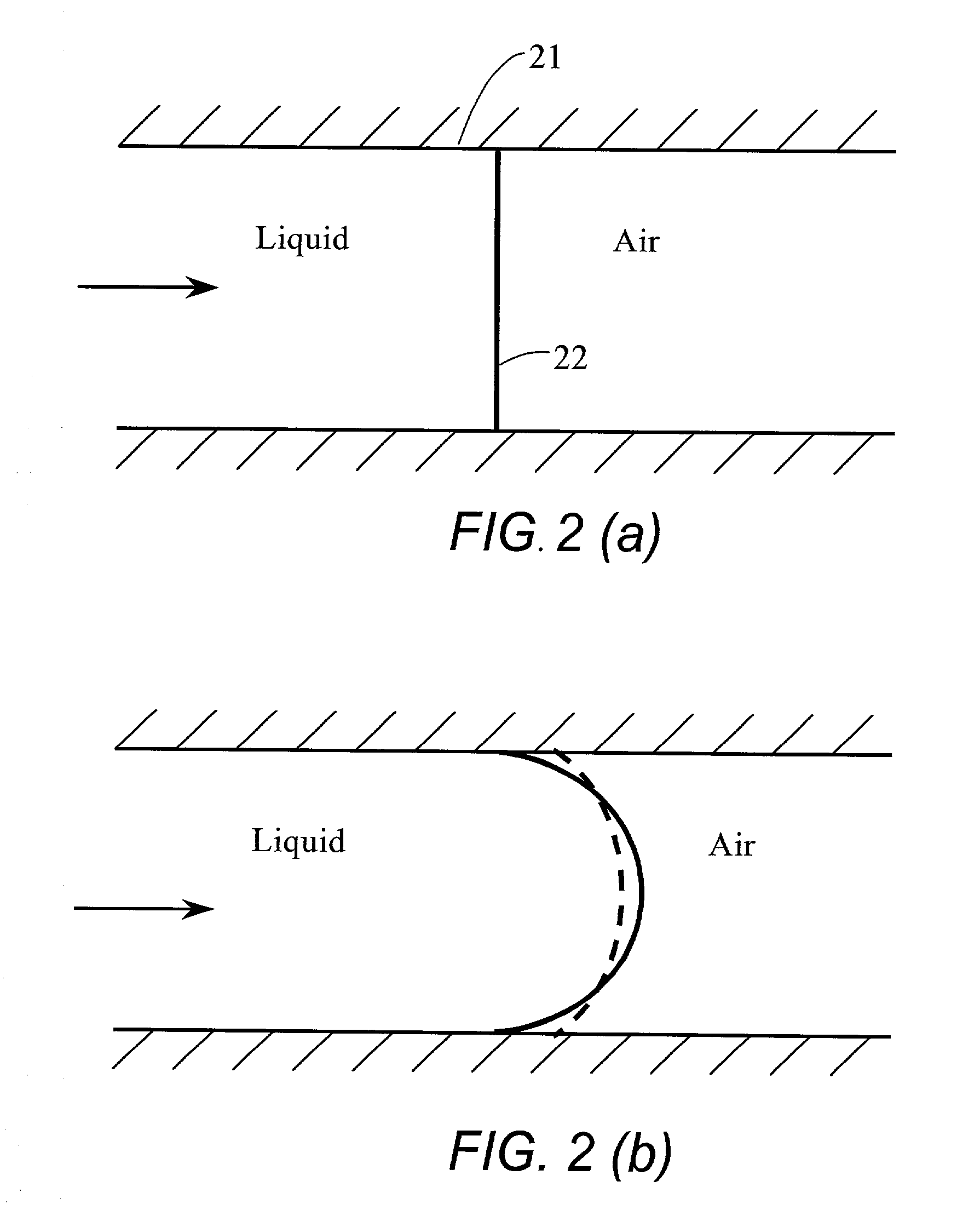Slipping contact line model and the mass-conservative level set implementation for ink-jet simulation
- Summary
- Abstract
- Description
- Claims
- Application Information
AI Technical Summary
Benefits of technology
Problems solved by technology
Method used
Image
Examples
Embodiment Construction
A. Introduction
[0025]As shown in FIG. 1, a “contact line” is formed at the intersection of two immiscible fluids (a liquid and air, for example) and a solid. In two space dimensions, the contact line is a straight line perpendicular to the paper. In three-dimensional axi-symmetric spaces, the contact line is actually a loop. A “contact line” is also called “triple point” because it is the point (or the line or the curve) where the three phases (two fluids and a solid) meet each other. Note that “slipping contact line,”“contact line,” and “triple point” will be used interchangeably herein. In many fluid systems, the interaction between the three phases in the immediate vicinity of a contact line can significantly affect the statics as well as the dynamics of the two immiscible fluids. Capillary tubes, spreading petroleum on ice, and ink flows in a print head nozzle are just a few examples. In attempting to numerically simulate fluid flow with a slipping contact line, one encounters s...
PUM
 Login to View More
Login to View More Abstract
Description
Claims
Application Information
 Login to View More
Login to View More - R&D
- Intellectual Property
- Life Sciences
- Materials
- Tech Scout
- Unparalleled Data Quality
- Higher Quality Content
- 60% Fewer Hallucinations
Browse by: Latest US Patents, China's latest patents, Technical Efficacy Thesaurus, Application Domain, Technology Topic, Popular Technical Reports.
© 2025 PatSnap. All rights reserved.Legal|Privacy policy|Modern Slavery Act Transparency Statement|Sitemap|About US| Contact US: help@patsnap.com



